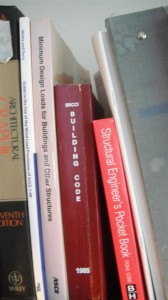 Most recognize that the Codes prior to 1992 were quite adequate. The failures noted after Hurricane Andrew were more the lack of implementation than lack of rules.
The subsequent Code changes were, by in the opinion of many, an over-reaction. We saw it again in 2007 in the wake of the 2004 hurricanes (Charley, Frances, Ivan and Jeanne (and later tropical storm Bonnie)).
Most recognize that the Codes prior to 1992 were quite adequate. The failures noted after Hurricane Andrew were more the lack of implementation than lack of rules.
The subsequent Code changes were, by in the opinion of many, an over-reaction. We saw it again in 2007 in the wake of the 2004 hurricanes (Charley, Frances, Ivan and Jeanne (and later tropical storm Bonnie)).
We have begun to expect that any later changes in code would inevitably become tougher and tougher. However, some of the recent changes in FBC 2010 have been a surprise. The actual design wind pressures have reverted, to some extent, back to pre-2007 levels.As most of us are slogging through the new Code I have noted a few key points that might be of interest to many builders and do-it-yourselfers. These are not, of course, all the changes but are some of the key ones.
- A key one, mentioned in my last Newsletter to Florida Builders, is that we are operating, now, on 3 wind charts which are showing Ultimate Wind Speed. These speeds appear higher but actually are not, in practice. Key is that we need to show the new numbers on the plans. We need to show the pressure calculations based upon current data.
- Now, all plans for new construction of buildings must have a statement on the plans that states that the design load bearing values of the soils have been taken into account for the design of the structure and the values must be shown on the plans. This appears to me to be a CYA clause in the Code. From my perspective, our statement that we have taken it into account states that we have considered it and have made a judgment whether or not it is adequate for the purposes. This places the responsibility squarely on the shoulders of the professional involved. I think there will be more questions asked about the site conditions.
- Compaction test must be on site for the footer/slab inspection (if any fill 12” or more is put on the property under the slab) before and inspection can be approved. Compaction tests have been a flexible area in my experience. Modified Proctor ratings are usually noted on the plans but I have seen countless project where this is never checked. Now, per the Code, it must be.
- Stair treads for residential are a minimum of 10” in depth maximum of 7 3/4 riser. This is a bit more latitude than we had in the past.
- All elevations must be shown on plans for flood compliance i.e. base flood; base plus freeboard, top of lowest floor in “A” zones, bottom of lowest structural member in “V” zones. This, to me, says that we will need to be aware of actual elevations of the site. We used to be able to state generic terms and relative elevations. This one appears to mean that we need to me more specific in certain instances.
- Openings in all block walls must be sealed before putting in windows or doors, Must use sealant not caulk. Blocks must be waterproofed around the entire opening on the inside and around the face of the blocks also.
- Clearance of wood siding must have a 2” clearance from vertical concrete i.e. columns, porches, deck, etc.. This is common sense but we need to make sure of this and I suspect the examiners will want to see it on the plans.






